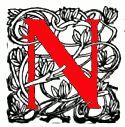
Eridge Castle by George W. Ward. 1888. Source: Elizabeth Balch, “Glimpses of Old English Homes. IV. Eridge Castle.” Click on image to enlarge it.

better place than Eridge could be chosen as an example of the country life and splendid hospitality of an English nobleman of the nineteenth century. All the national sports of the country are to be found within easy reach of it—hunting, racing, deer-taking, fishing, and shooting—and large is the number of those generously asked to sharein these amusements by the present owner of the place. While the greater part of the ivy-coloured walls of the castle itself is of comparatively recent date the park, covering an area of some two thousand five hundred acres, is one of the oldest and most beautiful in all England. A description of it in the year 1606 is preserved to us in a letter from Aaron Hill to his friend Mr. J. Mallet:—
There is a place called Eridge Park belonging to Lord Abergavenny, and an open, old, appropriated forest of the name of Water down, that butted on the park enclosure. There was also near it a house called Eridge House. The park was an assemblage of all nature’s beauties, hills, vales, brooks, lawns, groves, thickets, rocks, and waterfalls; all wildly noble and irregularly amiable.
If this account of the beauties of Eridge Park was correct in 1606 it is doubly so now, and so varied is the character of the timber and shrubbery that at one point you can drive, or walk, through an avenue of dark pines, still and solemn as the aisle of a cathedral, 'while a short way beyond you come to branching beeches which border the broad paths, and have a tangle of sweet smelling undergrowth Where the sunshine plays hide and seek with the shadows, and from which hares and rabbits dart out suddenly, scampering across the road only to hide themselves again in like retreats of leafy green. Yet a little further on large oaks stand, each one alone, that no lesser tree may injure its beauty by too close contact, and again stretching away to the left, masses of bracken and feathery ferns form pleasant resting places for the herds of deer grazing peacefully, with their heads turned towards the breeze, that the first warning of danger may come the more quickly to their sensitive ears. There are in all seven hundred head of deer, one hundred red, the rest fallow. — Elizabeth Balch
[You may use this image without prior permission for any scholarly or educational purpose as long as you (1) credit the person who scanned the image and (2) link your document to this URL in a web document or cite the Victorian Web in a print one. George P. Landow]
Bibliography
Balch, Elizabeth. “Glimpses of Old English Homes. IV. Eridge Castle.”. English Illustrated Magazine. (June 1888): 579-91. Hathi Trust online version of a copy in the University of California Library. Web. 5 March 2021.
Last modified 5 April 2002